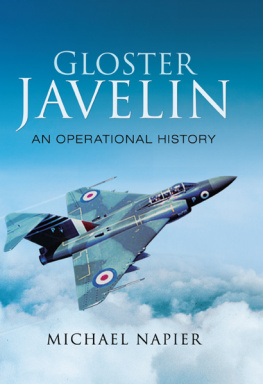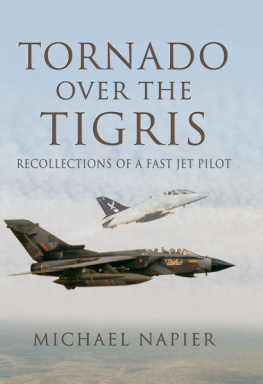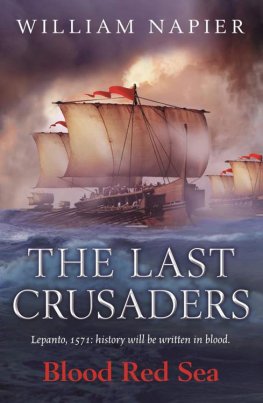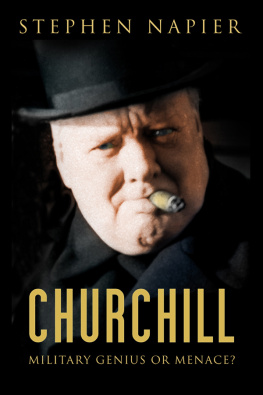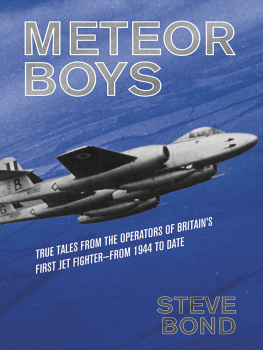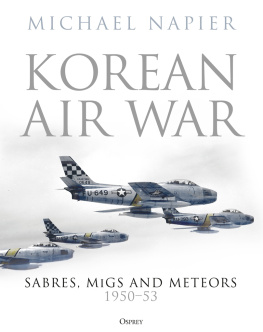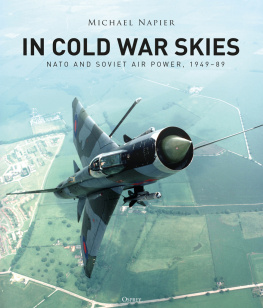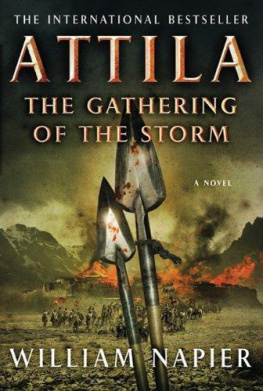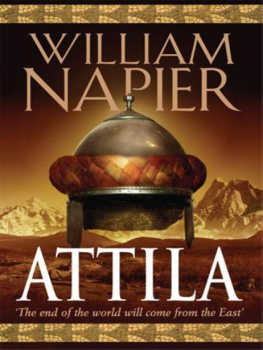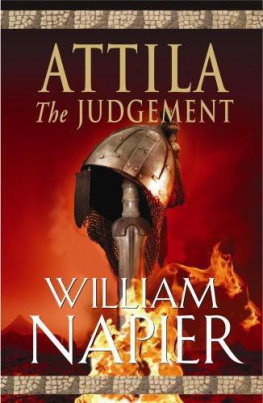Napier - Gloster Javelin
Here you can read online Napier - Gloster Javelin full text of the book (entire story) in english for free. Download pdf and epub, get meaning, cover and reviews about this ebook. year: 2016, publisher: Pen and Sword, genre: Non-fiction. Description of the work, (preface) as well as reviews are available. Best literature library LitArk.com created for fans of good reading and offers a wide selection of genres:
Romance novel
Science fiction
Adventure
Detective
Science
History
Home and family
Prose
Art
Politics
Computer
Non-fiction
Religion
Business
Children
Humor
Choose a favorite category and find really read worthwhile books. Enjoy immersion in the world of imagination, feel the emotions of the characters or learn something new for yourself, make an fascinating discovery.
- Book:Gloster Javelin
- Author:
- Publisher:Pen and Sword
- Genre:
- Year:2016
- Rating:5 / 5
- Favourites:Add to favourites
- Your mark:
- 100
- 1
- 2
- 3
- 4
- 5
Gloster Javelin: summary, description and annotation
We offer to read an annotation, description, summary or preface (depends on what the author of the book "Gloster Javelin" wrote himself). If you haven't found the necessary information about the book — write in the comments, we will try to find it.
Gloster Javelin — read online for free the complete book (whole text) full work
Below is the text of the book, divided by pages. System saving the place of the last page read, allows you to conveniently read the book "Gloster Javelin" online for free, without having to search again every time where you left off. Put a bookmark, and you can go to the page where you finished reading at any time.
Font size:
Interval:
Bookmark:
First published in 2015 by
Pen and Sword Aviation
An imprint of
Pen & Sword Books Ltd
47 Church Street
Barnsley
South Yorkshire
S70 2AS
Copyright Michael John William Napier 2015
ISBN: 9781473848818
PDF ISBN: 9781473848849
EPUB ISBN: 9781473848825
PRC ISBN: 9781473848832
The right of Michael John William Napier to be identified as Author of this work has been asserted by him in accordance with the Copyright, Designs and Patents Act 1988.
A CIP catalogue record for this book is
available from the British Library
All rights reserved. No part of this book may be reproduced or transmitted in any form or by any means, electronic or mechanical including photocopying, recording or by any information storage and retrieval system, without permission from the Publisher in writing.
Editor: Jasper Spencer-Smith
Design and artwork: Nigel Pell
Proof reader: Martin Derry
Printed and bound in England
By CPI Group (UK) Ltd, Croydon, CR0 4YY
Pen & Sword Books Ltd incorporates the Imprints of Pen & Sword Aviation, Pen & Sword Family History, Pen & Sword Maritime, Pen & Sword Military, Pen & Sword Discovery, Pen and Sword Fiction, Pen and Sword History, Wharncliffe Local History, Wharncliffe True Crime, Wharncliffe Transport, Pen & Sword Select, Pen & Sword Military Classics, Leo Cooper, The Praetorian Press, Seaforth Publishing and Frontline Publishing
For a complete list of Pen & Sword titles please contact
PEN & SWORD BOOKS LIMITED
47 Church Street, Barnsley, South Yorkshire, S70 2AS, England
E-mail:
Website: www.pen-and-sword.co.uk
Contents
FOREWORD
by
Air Marshal Sir F. B.
Sowrey, KCB, CBE, AFC
Officer Commanding, 46 Squadron
Javelin FAW 2, 1958-1960
This book about the Javelin is based on the experiences of those who operated it, both in the air and on the ground. The authors own background as a fast jet pilot in the Royal Air Force gives him a unique insight into the flying characteristics of the aircraft and the part it played at the leading edge of development of tactics for the higher-performance fighters that followed.
In the 1950s, the operational need was for a high-performance fighter that could intercept incoming raids by day or night, in all weathers and under conditions of massive jamming of air-defence radars. Supersonic (in a very steep dive) and fitted with an effective air-intercept radar, the Javelin met this requirement admirably. Through the late 1950s and into the early 1960s, the Javelin formed the frontline of our air defences, and with successive improvement, ultimately it became the first aircraft in RAF service to be missile armed. Later, the ability to make long-range overseas deployments was greatly enhanced by the fitting of an air-refuelling probe on the Javelin the first RAF fighter to have this capability which acted not only as a distance improver but also a force multiplier.
Flying the Javelin fostered a close working understanding between pilot and nav/rad to achieve the best results. That experience was to lay the foundations of the crew cooperation that was needed to operate the more sophisticated two-seat aircraft that followed, such as Phantom, Buccaneer and Tornado. The crews who operated the Javelin showed the highest levels of professional competence they were ready able and willing to fight if necessary and they played their part in showing the Wests determination to deter aggression during the Cold War.

INTRODUCTION
&
ACKNOWLEDGEMENTS
Often overlooked by aviation historians and enthusiasts alike in favour of its more glamorous single-seat contemporaries, the Gloster Javelin was a remarkable aircraft which occupies a unique place in the post-war history of the RAF. It was the first complex fast-jet aeroplane to enter service with the RAF: a high performance two-engined, two-crew, radar-equipped fighter, the services first aeroplane to have been designed from the very outset to be a night/all-weather fighter, the first front-line type to be armed with air-to-air missiles and the first of the RAFs tactical aircraft to be capable of routine air-to-air refuelling. I hope that by describing the work of Javelin squadrons through the late 1950s and early 1960s my book will restore the Gloster Javelin to its rightful place in the operational history of the RAF and that in future, aviation historians will give the type the recognition it truly deserves as one of the pivotal types operated by the service.
Although this is an operational history of a remarkable aircraft, it is more properly the operational history of the remarkable men who flew and serviced the Javelin. That story could not have been told without the active support of a number of Javelin Veterans who have encouraged me with great modesty and humour to tell their story. They have helped me to do so by sharing their recollections and answering my questions, often with great patience. Although their number is quite small, they represent a good cross section of aircrew and groundcrew, from squadron commanders to junior first-tourists, senior officers to NCO aircrew, from engine technicians to instrument fitters. I am deeply indebted to the following Javelin Men without whose generous support I could not have completed this book: Malcolm Adamson (85 Sqn), Brian Bullock (141, 41, 11, 25 and 29 Sqns), Jack Broughton (89, 85, 11 Sqns), Richard Carrey (87 Sqn), Peter Day (60 Sqn), Ed Durham (85 Sqn), Trevor Evans (64 Sqn), Roy Evans (25, 11 Sqns), Keith Fitchew (5, 64, 60 Sqns), Don Headley (64 Sqn), Sir Richard Johns (64 Sqn), Peter Masterman (29 Sqn), Mike Miller (JMTU, 23, 60 Sqns), Forbes Pearson (85, 29 Sqns), John Roberts (85 Sqn), Sir Freddie Sowrey (46 Sqn), Roy Smith (23, 11 Sqns), Gordon Wheeler (FCIRS, 85 Sqn), Alan Wright (46 Sqn).
I am very grateful to Judy Abell who kindly loaned her late husband Johns logbook and superb 35mm slides to me and to Judy Cowper who generously gave me full access to her late husband Chris extensive photograph collection and also loaned his log-book to me. Thank-you, too, to Alison Donovan for her kindness in lending me her late husband CJs photographs, and arranging via son Chris access to CJs log-book. This was particularly poignant for me, as CJ was my navigator on Tornado GR1s some 25 years after he flew Javelins.
I have tried to illustrate this book with operational photographs that is images showing aircrew and groundcrew doing their job, rather than simply those of static aircraft at air shows. Many of the photographs have not been previously published and I am extremely grateful to the following who have helped me in my research: Richard Gardner (FAST), Mike Smith (Newark Air Museum), Peter Elliott, Ian Alder, Belinda Day (all RAF Museum), Lee Barton (Air Historical Branch), Tim Kershaw (Jet Age Museum, Gloucester) all of whom have helped me to find suitable photographs. Also many thanks to Tony OToole for his ever enthusiastic support and for sharing his collection of Javelin photographs. I am particularly indebted to Graham Pitchfork for his great help and support not only for introducing me to his Javelin contacts, but also for access to his own collection of photographs.
Another invaluable source of material has been the crew-room diaries of the current RAF squadrons that once flew Javelins. I am very grateful to the following squadron members who made me welcome in those crew rooms: Simon Devenish (3 Sqn), Andy Paul (5 Sqn), James Pearce (11 Sqn), Richard Watts (29 Sqn), Steve Mills (33 Sqn), Steve Beardmore (41 Sqn), and Nick Graham (72 Sqn) (via e-mail).
Thanks are due to the following fellow writers and researchers: Tom Docherty (72 Sqn Historian), Roger Lindsay (whose work on individual aircraft histories has been a great help) and Guy Ellis (who generously shared his research on the Zambia detachment in 1966).
Next pageFont size:
Interval:
Bookmark:
Similar books «Gloster Javelin»
Look at similar books to Gloster Javelin. We have selected literature similar in name and meaning in the hope of providing readers with more options to find new, interesting, not yet read works.
Discussion, reviews of the book Gloster Javelin and just readers' own opinions. Leave your comments, write what you think about the work, its meaning or the main characters. Specify what exactly you liked and what you didn't like, and why you think so.

